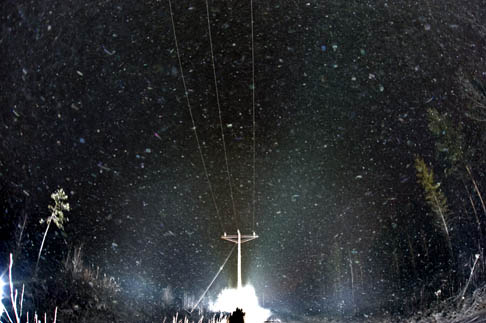One would think that such a demanding halo as Liljequist parhelia would need the best possible swarm to be seen. While that may be true in halo displays from natural light sources, with spotlight it is a different story. Here Liljequist parhelia - the two diffuse light areas both sides of the observers shadow - are visible despite the apparently crappy crystals that are filling the air.
Also visible are vague upwards curving extesions from Liljequist parhelia, which might have formed a complete half circle around subanthelic point if there was no cutting shadow. These are signs of the diffuse subanthelic halo that was photographed last winter in Rovaniemi ( 1 ). See also the lamp side of the display ( 2 ). The photo was taken by Marko Mikkilä in Sotkamo on 14th December. Click on the image to see a simulation.

Just remembered that should have made that simulation with crystals that have some random variation in the prism face ratios. This would have made the insides of the Liljequist parhelia / diffuse subanthelic halo more illuminated like in the photo. And also the blue circle would have disappeared. Yeah, I think that would have made quite perfect simulation, also could have tuned it to conform with lamp side.
ReplyDeleteMikkilä, what an interesting capture! This just goes to show that one must be ever alert even though it might first seem that nothing of particular interest is present.
ReplyDelete